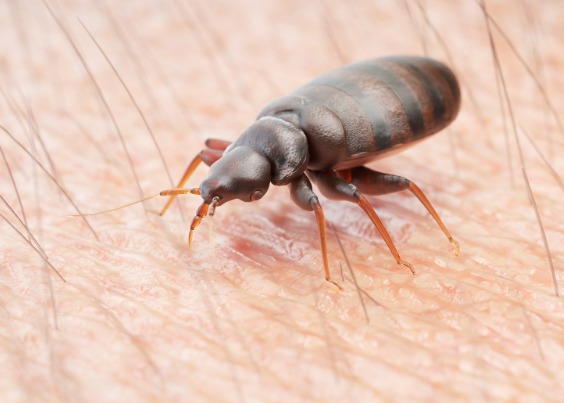How Long Does Bed Bug Extermination Take

Dealing with a bed bug infestation can be stressful, and one of the most common concerns homeowners have is how long the extermination process will take. We will explore the factors influencing the duration of bed bug extermination by EZ Bed Bug Exterminator NYC | New York Extermination – Treatment & Removal in Manhattan and provide insights into what you can expect during this challenging time. While each situation is unique, understanding the typical timeline and the variables can help you prepare for a more effective treatment.
Initial Inspection and Treatment
The initial inspection is a critical step in the bed bug extermination process. A professional will first assess the extent of the infestation by examining the affected areas, including furniture, bedding, and crevices. This inspection usually lasts between 30 minutes to an hour. After the assessment, the exterminator will develop a customized treatment plan based on the severity of the infestation.
The treatment itself can vary significantly in duration depending on the method chosen. For instance, chemical treatments often involve several stages, including application and retreatment, which can extend the overall timeline. On the other hand, heat treatments, including raising the temperature to kill bed bugs, might require a day or two. To ensure the treatment’s effectiveness, it’s essential to follow the exterminator’s recommendations and avoid disrupting the process.
Reevaluation and Follow-Up Treatments
Once the initial treatment is completed, the next phase involves reevaluating the situation. This step is crucial as it determines the success of the treatment and whether additional measures are needed. A follow-up inspection typically occurs a few weeks after the initial treatment to ensure that all bed bugs and their eggs have been eradicated.
The duration between treatments can vary. Sometimes, a single follow-up visit might suffice, while more severe infestations may require multiple follow-ups. The exterminator will use various techniques to confirm that the bed bugs are no longer present, including visual inspections and possibly monitoring devices. The time required for follow-up visits will depend on the extent of the infestation and the chosen treatment methods.
Factors Affecting the Duration
Several factors can influence how long the bed bug extermination process will take. One major factor is the severity of the infestation. A minor infestation may be managed within a few weeks, while a more extensive infestation can significantly extend the timeline. The type of treatment used also plays a role; for example, heat treatments are often faster but may require additional preparations and equipment.
Another crucial factor is the level of cooperation from the homeowner. Proper preparation before treatment, such as cleaning and decluttering, can expedite the process. Additionally, following the exterminator’s instructions regarding aftercare and prevention measures can help prevent a resurgence of the infestation, thereby affecting the overall duration.
Preventing Future Infestations
Once the initial extermination process is complete, preventing future infestations becomes vital. Bed bugs can reappear if the source of the problem is not addressed or if new infestations are introduced. Implementing preventive measures, such as regular inspections, proper hygiene, and monitoring for signs of bed bugs, can significantly impact how long the issue remains resolved.
Additionally, understanding how bed bugs spread—such as through secondhand furniture, luggage, or visiting friends—can help you stay vigilant. Investing in bed bug-proof covers for mattresses and box springs can also offer an extra layer of protection and reduce the chances of recurrence.
Treatment Methods and Their Impact on Duration
Different bed bug treatment methods have varying impacts on the overall duration of the extermination process. Chemical treatments, which use insecticides to eliminate bed bugs, often require multiple applications and may involve waiting periods between treatments. These treatments can be effective but may necessitate a longer timeline to eradicate all bed bugs and their eggs. In contrast, heat treatments involve raising the temperature of the affected areas to a level lethal to bed bugs, typically requiring a single day or two. While heat treatments can be quicker, they often require thorough preparation to ensure all areas reach the necessary temperatures. Additionally, each method’s effectiveness can influence how long the entire extermination process will take.
Homeowner’s Role in the Extermination Process
The homeowner’s role in the bed bug extermination process cannot be overstated. Proper preparation, such as thorough cleaning, decluttering, and following specific instructions from the exterminator, can significantly affect the duration and success of the treatment. Homeowners should also be prepared to make their living space accessible for inspections and treatments, which might involve moving furniture or taking other steps to facilitate the process. By actively participating and adhering to the exterminator’s guidelines, homeowners can contribute to a more efficient extermination process and potentially reduce the time required to resolve the infestation.
The duration of bed bug extermination is influenced by various factors, including the severity of the infestation, the type of treatment used, and the homeowner’s cooperation. While initial treatments and inspections can take a few days to weeks, follow-up visits and preventive measures are crucial in ensuring long-term success. By understanding these factors and maintaining vigilance, you can better manage the bed bug extermination process and reduce the likelihood of future infestations.





